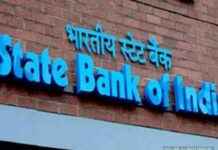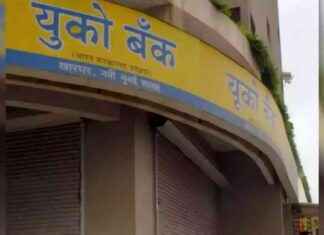MBBS in India: Unveiling the Costs for 2024
Embarking on a journey to become a doctor is not just about nurturing a noble vision; it’s also a considerable financial commitment, especially in a country like India where medical education holds prestigious significance. As we step into 2024, understanding the financial aspects of pursuing an MBBS (Bachelor of Medicine and Bachelor of Surgery) in India is crucial for aspiring medical students and their families. The costs associated with earning this coveted degree can vary dramatically, influenced by a myriad of factors including the choice between government and private institutions, location, and the availability of subsidies and scholarships. In this article, we’ll dive deep into the labyrinth of MBBS fees across various colleges in India, providing you with a comprehensive overview to help you plan your educational journey effectively. Whether you’re a student planning your future or a parent preparing for the investment, staying informed about these costs is pivotal in making educated decisions. Let’s unravel the financial tapestry of MBBS in India for 2024.
Overview of MBBS Education in India
**MBBS in India: Unveiling the Costs for 2024**
Pursuing a Bachelor of Medicine, Bachelor of Surgery (MBBS) in India is a dream for many aspiring doctors around the world. Known for its rigorous curriculum and prestigious institutions, India offers a comprehensive medical education. This article provides an in-depth look at MBBS education in India, focusing on the key aspects of the curriculum, admission processes, and, importantly, the financial considerations for 2024.
Overview of MBBS Education in India
The journey to becoming a doctor in India starts with the MBBS program, which typically spans five and a half years, including a one-year mandatory internship. MBBS in India is regulated by the National Medical Commission (NMC), ensuring a standardized level of education across the country.
Curriculum and Training
The MBBS curriculum in India is designed to provide both theoretical and practical knowledge essential for medical practice. The coursework includes basic sciences such as Anatomy, Physiology, Biochemistry, Pharmacology, Pathology, and Microbiology in the initial years, followed by clinical subjects like Medicine, Surgery, Obstetrics and Gynecology, and Pediatrics in the later years.
**Practical Exposure and Internship**
Students undergo practical training in hospitals associated with their medical colleges. This hands-on training is critical, as it prepares students for real-world medical issues. The compulsory internship in the final year allows students to work under supervision in various specialties, enhancing their clinical skills.
Entrance Examinations
Admission to MBBS programs in India is highly competitive, requiring students to pass entrance examinations like the National Eligibility cum Entrance Test (NEET). NEET scores are the primary criteria for admission, making it one of the most challenging tests for medical aspirants.
MBBS Fees in India: A 2024 Perspective
Understanding the financial aspect of MBBS education is crucial for students and parents planning their education. The cost of MBBS in India varies widely between government and private institutions.
Government vs. Private Medical Colleges
Government medical colleges are significantly subsidized, with annual fees ranging from INR 10,000 to INR 50,000. In contrast, private medical colleges can charge anywhere from INR 10 lakhs to INR 25 lakhs per annum. The wide range in fees reflects differences in infrastructure, faculty, and amenities provided by private institutions.
**Scholarships and Financial Aid**
Various scholarships and financial aid options are available for deserving students. These can significantly reduce the burden of tuition fees, making medical education more accessible.
State-wise Variation in Fees
There is also a noticeable variation in MBBS fees across different states, influenced by the state government’s policies. For instance, states like Karnataka and Maharashtra have a higher number of private colleges, which generally have higher fees compared to government colleges in other states.
Questions to Consider When Planning for MBBS in India
1. **What are the eligibility criteria for MBBS admissions
Key Factors Influencing MBBS Fees in 2024
**MBBS in India: Unveiling the Costs for 2024**
Pursuing a Bachelor of Medicine, Bachelor of Surgery (MBBS) degree in India is a dream for many aspiring doctors. As we approach 2024, understanding the factors that influence the fees for this demanding course is crucial for students and parents alike. This comprehensive analysis delves into the key factors that are set to determine the cost of MBBS programs across various colleges in India in 2024. By examining these elements, students can better prepare for the financial aspects of their medical education.
**Government Regulation and Policies**
One of the primary drivers of MBBS fees in India is government regulation. The fees in government-controlled medical colleges are significantly lower than those in private institutions. This is because the government subsidizes a substantial portion of the education cost. However, policy changes and updates can influence these fees. For instance, initiatives aimed at increasing the number of medical professionals may lead to increased funding for medical colleges, potentially stabilizing or even reducing fees.
*How do government policies impact MBBS fees?*
Government decisions on education funding, scholarship programs, and seat allocation directly impact MBBS fees. An increase in government-funded seats, for example, could lead to more affordable education for a larger number of students. Conversely, reductions in subsidies or changes in reservation policies might increase costs for some demographics.
**Private College Dynamics**
In contrast to government institutions, private medical colleges have higher tuition fees due to the lack of government subsidies. The fees in these institutions are influenced by various factors including infrastructure costs, faculty salaries, and the demand for medical education.
*What drives the cost of MBBS in private colleges?*
Private colleges often invest heavily in state-of-the-art facilities and experienced faculty to attract students, which in turn increases the operational costs. Additionally, the competitive landscape of private medical education in India compels these institutions to continuously upgrade their offerings, further impacting the fees.
**Demand and Supply of Medical Seats**
The demand for MBBS seats in India consistently outstrips supply, contributing to higher fees. With a limited number of seats available and a growing number of applicants each year, colleges can afford to set higher fees, especially in the private sector. The geographical distribution of colleges also affects fee structures; regions with fewer colleges might see higher fees due to increased demand.
*How does the imbalance between demand and supply affect MBBS fees?*
This imbalance encourages competition among students, which can lead to higher entrance requirements and increased fees as institutions capitalize on the high demand. Moreover, this scenario often results in students opting for management quota seats in private colleges, which are priced significantly higher than merit-based seats.
**Accreditation and Ranking of Institutions**
The reputation and accreditation of a medical college are directly proportional to its fees. Higher-ranked colleges, or those with better accreditation, generally charge more due to their perceived value. These institutions promise better education quality, higher exposure,
Comparison of MBBS Fees in Government vs Private Colleges
**MBBS in India: Unveiling the Costs for 2024**
Pursuing a Bachelor of Medicine and Bachelor of Surgery (MBBS) in India is a dream for many aspiring doctors. However, the financial aspect of this journey can significantly vary depending on the choice between government and private medical colleges. In this comprehensive analysis, we’ll explore the differences in MBBS fees between these institutions as we head into 2024, providing you with all the necessary details to make an informed decision.
**Comparing MBBS Fees: Government vs Private Colleges**
When choosing where to study medicine in India, one of the most significant factors is cost. The disparity in fees between government and private medical colleges is considerable, impacting the decision-making process for students and families.
**What Are the Typical Fees in Government Medical Colleges?**
Government medical colleges are heavily subsidized by the Indian government, making them much more affordable compared to their private counterparts. As of 2024, the annual fees for an MBBS program in a government college can range from INR 10,000 to INR 50,000. This fee structure is designed to promote accessibility to medical education for students from various economic backgrounds. Government colleges not only offer lower fees but also come with the assurance of standardized education regulated by top medical councils.
**How Do Private Medical College Fees Compare?**
In contrast, private medical colleges have much higher fees, owing primarily to the lack of government funding. For the year 2024, students might expect to pay anywhere between INR 10 lakhs to INR 25 lakhs per annum. The fees in private colleges can include tuition, development charges, and other miscellaneous costs that are not typically transparent in government institutions.
**Why Is There Such a Large Disparity in Fees?**
The reasons behind the vast difference in fees between government and private medical colleges stem from several factors:
– **Subsidization**: Government colleges receive substantial subsidies from the government, which offsets the cost for students.
– **Infrastructure and Facilities**: Private colleges often invest heavily in infrastructure, modern facilities, and technology, which drives up the cost.
– **Faculty**: Private institutions sometimes attract renowned faculty by offering competitive salaries, which in turn influences the fee structure.
**Is the Higher Cost of Private Colleges Justified?**
While the fees are undoubtedly higher in private colleges, they often offer more modern facilities, smaller class sizes, and sometimes better geographical accessibility. For some students, the higher fees are justified by the proximity to their residence or better campus amenities.
**What Should Aspiring Medical Students Consider?**
Aspiring MBBS students should weigh several factors before making a decision:
– **Financial Capability**: Consider your financial situation or look for scholarships and financial aid options.
– **Career Goals**: Evaluate how the college’s reputation might impact your future opportunities.
– **Personal Preferences**: Consider aspects like location, campus life, and the overall environment.
Choosing between a government or private medical
State-wise Analysis of MBBS Course Fees
**MBBS in India: Unveiling the Costs for 2024**
Pursuing an MBBS (Bachelor of Medicine and Bachelor of Surgery) in India is a dream for many aspiring doctors. However, the financial aspect of this journey can be quite daunting. To help students and parents plan effectively, this article provides a detailed state-wise analysis of MBBS course fees across India.
**Understanding the Spectrum of MBBS Fees Across States**
**Why Do MBBS Fees Vary Across Different States?**
MBBS fees in India vary widely depending on several factors including the type of institution (government or private), the state in which the institution is located, and the management quota. Government colleges typically charge lower fees compared to private institutions. For example, government medical colleges in states like Tamil Nadu and Karnataka may charge anywhere between INR 10,000 to INR 50,000 per year, while private colleges in these states can charge upwards of INR 10 lakh per year.
**Key States with the Lowest MBBS Fees**
States like Kerala, Tamil Nadu, and Andhra Pradesh are known for their relatively low MBBS fees, especially in government colleges. These states have a higher number of government medical colleges, which helps in keeping the tuition fees affordable. In contrast, private colleges in these regions, while more expensive than their government counterparts, still tend to be less costly than those in northern states like Uttar Pradesh and Punjab.
**Exploring High Fee Structures in Private Medical Colleges**
**What Drives the High Fees in Private Medical Colleges?**
Private medical colleges often cite the high cost of infrastructure, advanced equipment, and highly qualified faculty as some of the reasons for their steep fees. Additionally, the demand for medical seats in India far outstrips the supply, allowing private institutions to charge higher fees. States like Maharashtra, Karnataka, and Delhi, known for their high-quality medical education, have some of the most expensive private medical colleges in the country.
**Comparison of Fees in Prominent Private Medical Colleges Across States**
In Maharashtra, for instance, private MBBS fees can range from INR 20 lakh to INR 25 lakh per year. Similarly, in Karnataka, the annual fees at private colleges can go up to INR 15 to 20 lakh. It’s important for students to research and understand the fee structure of each college, as well as the additional costs involved, such as hostel fees, mess fees, and other miscellaneous expenses.
**Government vs Private MBBS Fees: A Detailed Comparison**
**How Much More Do Private Colleges Charge Compared to Government Colleges?**
On average, private MBBS colleges charge about ten times more than government medical colleges. This vast difference makes government colleges highly competitive, with students scoring high in national entrance exams like NEET having a better chance of securing a seat in these institutions.
**State-Specific Examples of Fee Disparities**
In states like Rajasthan and West Bengal, the contrast in fees between government and
Impact of NEET on MBBS Fees in India
**Impact of NEET on MBBS Fees in India**
The landscape of medical education in India has seen significant transformations, especially with the introduction of the National Eligibility cum Entrance Test (NEET). This examination is pivotal for students aspiring to pursue a Bachelor of Medicine, Bachelor of Surgery (MBBS) degree in India. Understanding how NEET has influenced MBBS fees is essential for both prospective students and policymakers.
**How Has NEET Affected MBBS Admission Processes and Fees in India?**
NEET was implemented with the objective of standardizing admissions to undergraduate medical courses across the country. Prior to NEET, admissions were fragmented; various states and private colleges conducted their own entrance tests, leading to disparities in the selection process and fee structures. With NEET, there is a uniform testing standard, theoretically leveling the playing field for all applicants.
However, the introduction of NEET has also indirectly affected MBBS fees. The consolidation of the entrance process has increased competition significantly. This heightened competition has led many private colleges to increase their fees. They justify this by pointing to the improved quality of students they now admit due to NEET. Moreover, the capitation fees, though officially illegal, have reportedly gone underground, adding to the financial burden on students.
**What Are the Current Trends in MBBS Fees Post-NEET Implementation?**
Since the implementation of NEET, there has been a noticeable increase in the tuition fees charged by both government and private medical colleges. Government colleges, while still substantially cheaper than their private counterparts, have seen a gradual uptick in fees. This can be attributed to several factors including increased operational costs and the need for better infrastructure and facilities.
Private medical colleges, on the other hand, have a more pronounced increase in fees. The fee structure in private medical colleges can vary widely, with some charging upwards of 20 to 25 lakhs per annum, excluding hostel and other miscellaneous fees. The lack of a standardized fee structure in private colleges leads to a significant financial burden on students and their families.
**How Does NEET Influence the Economic Accessibility of MBBS Courses?**
The economic accessibility of MBBS courses in India post-NEET is a critical issue. While NEET has streamlined the admission process, it has also placed a considerable financial strain on many families, especially those from lower socio-economic backgrounds. The steep increase in tuition fees, combined with the costs associated with preparing for such a competitive exam (like coaching classes), means that the dream of becoming a doctor is increasingly reserved for those who can afford it.
Furthermore, scholarships and financial aid are not as prevalent in medical education as they are in other fields of study in India. This lack of financial support further exacerbates the issue, making it difficult for economically disadvantaged students to pursue their MBBS dreams.
**What Are the Long-Term Implications of NEET on MBBS Fees and Medical Education Quality?**
Looking ahead, the impact of NEET on MBBS fees and
Scholarships and Financial Aid for MBBS Students
**MBBS in India: Unveiling the Costs for 2024**
Pursuing a Bachelor of Medicine and Bachelor of Surgery (MBBS) in India is a dream for many aspiring doctors. However, the financial aspect of this education can often become a barrier. As the costs associated with MBBS programs continue to rise, understanding the landscape of scholarships and financial aid available for MBBS students is crucial. This comprehensive guide aims to provide a detailed overview of the financial support options to help manage the expenses of an MBBS education in India in 2024.
Understanding the Costs of MBBS in India
Before diving into the specifics of financial aid, it’s essential to grasp the overall expense of studying MBBS in India. The tuition fees for MBBS courses can vary significantly depending on whether the institution is a government or private college. Government medical colleges are considerably cheaper, with annual fees ranging from INR 10,000 to INR 50,000. In contrast, private colleges can charge anywhere from INR 10 lakh to INR 25 lakh per year.
In addition to tuition, prospective students must consider accommodation, food, books, and other miscellaneous expenses. These can add substantially to the total cost of education, making financial planning all the more critical.
Types of Scholarships for MBBS Students
Merit-Based Scholarships
Many institutions and external bodies offer merit-based scholarships to students who have excelled academically. These scholarships are highly competitive and require maintaining a certain grade point average to continue receiving the benefit. Examples include the National Scholarship Portal (NSP) where numerous merit-based options are available.
Need-Based Scholarships
For students who may not meet the high academic requirements for merit-based scholarships, need-based scholarships provide an alternative. These are designed to assist students from lower-income families. The eligibility criteria often include family income ceilings and other socio-economic factors.
Specialized Scholarships
Several scholarships target specific groups such as women, minorities, or students from certain geographic regions. For instance, the “Pragati Scholarship Scheme” by AICTE aims to support girl students pursuing technical education.
Navigating Financial Aid for MBBS Students in India
Securing financial aid requires careful research and timely application. Here are some steps to guide MBBS aspirants:
1. **Research Early**: Start looking for scholarship opportunities as early as possible. Understand the eligibility criteria and application deadlines to ensure timely submissions.
2. **Application Preparation**: Gather all necessary documents such as academic records, proof of income, and identification documents. Letters of recommendation and personal essays might also be required.
3. **Consider Multiple Options**: Apply for various scholarships and financial aid programs to increase your chances of receiving support. Don’t overlook smaller scholarships, as these can cumulatively cover a significant portion of expenses.
4. **Stay Informed**: Keep up with the latest updates on scholarships and financial aid from college websites, the National Scholarship Portal, and
Hidden Costs Associated with MBBS Studies
**MBBS in India: Unveiling the Costs for 2024**
Pursuing a Bachelor of Medicine, Bachelor of Surgery (MBBS) in India is a dream for many aspiring doctors. While the allure of becoming a healthcare professional is strong, the financial aspect of this education often requires careful consideration. Beyond the obvious tuition fees, there are several hidden costs associated with MBBS studies that can affect your budgeting. This article delves deep into these costs to help future medical students plan more effectively for their education in 2024.
Tuition Fees and Beyond: What Does MBBS Really Cost?
When considering MBBS in India, the first and most apparent cost is the tuition fee. However, the expenses don’t stop there. Students must also budget for registration fees, laboratory fees, and examination fees, which are seldom mentioned upfront. Additionally, many colleges charge for access to facilities such as libraries and sports centers.
**Are there additional fees for specialized courses within the MBBS program?**
Yes, specialized courses or electives often have separate charges, which can be significant depending on the nature of the specialization. These courses require more resources, sometimes including advanced technology and materials, leading to higher costs.
Accommodation and Living Expenses: The Unseen Educational Costs
Accommodation is a major hidden cost for many students, especially those relocating to different cities for their studies. The cost of living in metropolitan areas where prominent medical colleges are located can be quite high compared to smaller cities or towns.
**How much should students budget for living expenses?**
A safe estimate would be to budget anywhere from 10,000 to 20,000 INR per month, depending on the city. This covers housing, food, transportation, and other daily expenses. It’s important for students to research the cost of living in the specific area where they plan to study to make accurate budgeting predictions.
Equipment and Study Materials: Necessary but Costly
MBBS students are required to purchase a variety of study materials and equipment throughout their course. From medical books and journals, which are updated frequently and can be expensive, to lab coats and medical instruments like stethoscopes and diagnostic sets, these costs add up quickly.
**Can students save money on these materials?**
Looking for second-hand books, sharing resources with classmates, and accessing online materials can help manage these expenses. Some universities also offer rental programs for equipment.
Transportation and Clinical Rotations
Many students do not account for the cost of transportation to and from hospitals or clinics, where they complete their practical learning and rotations. Particularly in larger cities, these costs can be significant due to the distances involved.
**What are the best strategies for managing transportation costs?**
Using public transportation, carpooling with classmates, or even choosing accommodation closer to hospitals can significantly reduce these expenses. Some colleges may also provide shuttle services to major clinical sites.
Miscellaneous Expenses
There are always additional costs that
MBBS Fee Structure at Top Indian Universities
**MBBS Fee Structure at Top Indian Universities**
Pursuing a career in medicine is a dream for many, yet understanding the financial aspect of this dream is crucial. In this article, we delve deep into the MBBS fee structure at top Indian universities for the academic year 2024, providing a clear and comprehensive guide for aspiring medical students and their families. This analysis will help you plan your education budget, considering both tuition fees and associated costs.
What Are the General Tuition Fees for MBBS in India?
The cost of studying MBBS in India can vary significantly depending on the type of institution—government or private. Government medical colleges are highly subsidized by the Indian government, making their tuition fees much lower compared to private medical colleges. As of 2024, the average annual tuition fee in government colleges can range from INR 10,000 to INR 50,000. On the other hand, private medical colleges can charge anywhere from INR 10 lakh to INR 25 lakh per annum.
These variations are largely due to the differing subsidies provided to the institutions and the facilities they offer. It’s crucial for students to consider not only the tuition fees but also other expenses such as hostel fees, mess charges, and other miscellaneous costs, which can add significantly to the overall expenditure.
How Do MBBS Fees Compare Among Top Government and Private Universities?
**Government Medical Colleges**
1. **All India Institute of Medical Sciences (AIIMS), New Delhi**
– **Tuition Fees**: Approximately INR 1,628 per annum
– **Additional Costs**: Hostel and other charges are minimal.
2. **Armed Forces Medical College (AFMC), Pune**
– **Tuition Fees**: Around INR 64,950 per annum
– **Additional Costs**: Includes hostel, library, and lab fees.
**Private Medical Colleges**
1. **Manipal Academy of Higher Education**
– **Tuition Fees**: Approximately INR 14 lakh per annum
– **Additional Costs**: Hostel and other living expenses.
2. **Kasturba Medical College, Manipal**
– **Tuition Fees**: About INR 13.10 lakh per annum
– **Additional Costs**: Excludes hostel and mess charges.
While government colleges are substantially cheaper, the competition to secure a seat is fierce due to the limited number of seats. Private colleges, although expensive, are easier to get into and often offer more advanced facilities and infrastructure.
What Scholarships and Financial Aid Options Are Available for MBBS Students in India?
Understanding the financial aid landscape is crucial for students who may find the tuition fees daunting. Many universities and external bodies offer scholarships and financial aid to deserving students based on merit or financial need. For instance, AIIMS provides scholarships and financial aid to economically weaker sections. Private colleges also offer merit-based scholarships, reducing the financial burden on stellar students.
Moreover, students can avail of
How to Plan Your Budget for MBBS in India
**MBBS in India: Unveiling the Costs for 2024**
Pursuing an MBBS (Bachelor of Medicine and Bachelor of Surgery) in India is a dream for many aspiring doctors around the globe. However, before embarking on this demanding yet rewarding journey, it is crucial to understand and plan your finances meticulously. The costs associated with completing an MBBS degree in India can vary widely depending on a variety of factors including the type of institution (private vs. government), location, and additional expenses beyond tuition fees. This article offers a comprehensive guide on how to strategically plan your budget for MBBS in India in 2024.
Understanding the Tuition Fees Structure
The first step in planning your budget for MBBS in India is to understand the tuition fees structure. For government medical colleges, the fees can range from as low as INR 10,000 to INR 50,000 per annum, making them highly affordable. However, private medical colleges can charge significantly higher fees, ranging from INR 10 lakhs to INR 25 lakhs per annum. The variation in fees is largely influenced by the college’s infrastructure, faculty, and facilities.
To get a clear picture, prospective students should research the specific fees of the colleges they are interested in. Official college websites and recent educational fairs are reliable sources for up-to-date information. Additionally, it’s important to note that top-ranking institutions might have higher fees but also offer better facilities and prospects in the long run.
Budgeting for Accommodation and Living Expenses
Once you have an understanding of the tuition fees, the next crucial aspect is budgeting for accommodation and living expenses. These costs can vary greatly depending on the city where the college is located. For instance, living in metropolitan cities like Delhi or Mumbai is significantly more expensive compared to smaller cities or towns.
Prospective students should consider whether they will live in college hostels or rent private accommodation. While hostels are generally more economical, offering basic facilities at a lower cost, private rentals might provide more comfort at a higher price. Monthly expenses for food, transportation, and utilities should also be included in the budget. On average, a student might need between INR 10,000 and INR 20,000 per month for living expenses, excluding accommodation.
Additional Costs to Consider
Apart from tuition and living expenses, there are additional costs that need to be factored into your budget. These include books and supplies, which can cost up to INR 50,000 annually, depending on your course requirements. Travel expenses, especially if you are an international student or if you plan to visit home during breaks, can also add up.
Furthermore, consider setting aside funds for emergencies and unplanned expenses that might arise during your studies. It’s also wise to include health insurance in your budget, as it is crucial for students staying away from home.
Financial Aid and Scholarships
To offset some of the financial burdens,
Loan Options for Aspiring MBBS Students
**MBBS in India: Unveiling the Costs for 2024**
Pursuing a Bachelor of Medicine and Bachelor of Surgery (MBBS) degree in India is a dream for many aspiring doctors. However, the financial aspect of this education can often become a barrier. As we look ahead to 2024, it’s crucial for students and their families to understand the various costs associated with studying MBBS and the financing options available to manage these expenses effectively.
Understanding MBBS Course Fees in 2024
The cost of pursuing an MBBS degree in India can vary significantly depending on the type of institution—government or private. Government colleges are considerably cheaper, with annual fees ranging from INR 10,000 to 50,000. On the other hand, private medical colleges can charge anywhere from INR 10 lakh to 25 lakh per annum. This wide range in fees makes it imperative for aspiring MBBS students to explore their loan options thoroughly.
What Factors Influence MBBS Fees in Government and Private Colleges?
The primary factor influencing the fee structure is the nature of the funding for the college. Government institutions are heavily subsidized by the state, allowing them to offer lower fees. In contrast, private colleges rely on tuition fees to cover their operational costs, resulting in higher charges. Additional factors include the location of the college, the infrastructure provided, and the reputation and academic results of the institution.
Comprehensive Guide to Loan Options for Aspiring MBBS Students
For many students, securing a loan is a vital step toward realizing their medical education goals. Here’s a detailed look at the loan options available for aspiring MBBS students in 2024.
What are the Different Types of Educational Loans Available for MBBS Students?
1. **Government Loans:** Several government-backed schemes offer low-interest loans specifically designed for students pursuing higher education, including MBBS. These loans often come with repayment holidays, meaning students can start repaying after completing their course.
2. **Private Bank Loans:** Many private banks and financial institutions offer educational loans with competitive interest rates. These loans generally cover tuition fees, books, accommodation, and other educational expenses.
3. **NBFCs and Other Lenders:** Non-Banking Financial Companies (NBFCs) also provide loans for MBBS studies. These might be slightly more expensive in terms of interest rates but can offer more flexible repayment options.
How Can Students Maximize Their Chances of Securing an MBBS Loan?
– **Maintaining a Good Academic Record:** A strong academic performance can increase the likelihood of loan approval as it reassures lenders of the applicant’s commitment to completing their education.
– **Having a Co-applicant:** Usually, parents, guardians, or a close relative act as co-applicants to add credibility to the loan application. This is particularly important for students who have no credit history.
– **Providing Collateral:** In cases where a higher loan amount is needed, providing collateral can help in securing
Fee Trends: Historical vs. Current MBBS Costs
**MBBS in India: Unveiling the Costs for 2024**
Pursuing a Bachelor of Medicine, Bachelor of Surgery (MBBS) in India is a dream for many aspiring doctors. However, the path to becoming a medical professional in India is not only academically challenging but also financially demanding. In this article, we provide a detailed comparison of historical and current MBBS costs, which will help students and parents plan better for the financial aspects of medical education.
**Understanding the Rise in MBBS Fees in India**
The cost of obtaining an MBBS degree in India has seen a noticeable increase over the past decades. Initially, the fees for MBBS courses were substantially lower, especially in government medical colleges. For instance, in the early 2000s, the annual fee for a government medical college could be as low as INR 10,000. However, this scenario has drastically changed.
Today, the fee structure varies significantly between government and private medical colleges. As of 2024, government medical colleges have an annual fee range from INR 25,000 to INR 1 lakh, which is still considerably affordable compared to private institutions. On the other hand, private medical colleges can charge anywhere between INR 10 lakh to INR 25 lakh per annum. This spike in fees is attributed to several factors including inflation, increased operational costs, and the rising demand for medical education.
**What Factors Contribute to the Increasing Costs of MBBS in India?**
Several factors contribute to the rising costs of MBBS education in India:
1. **Infrastructure and Facilities**: Enhancing educational facilities to meet global standards requires substantial investment, which in turn increases the tuition fees.
2. **Faculty Costs**: Attracting and retaining qualified faculty in medical colleges involves higher salary packages, which impacts the overall educational expenses.
3. **Technological Advancements**: Incorporating advanced medical technologies and simulation-based learning tools in the curriculum also adds to the costs.
4. **Regulatory Changes**: Government regulations and standards to ensure quality education can lead to additional financial requirements for compliance.
**How Affordable is MBBS in Government vs. Private Colleges?**
The affordability of MBBS courses in India varies dramatically between government and private colleges. Government colleges are subsidized by the state, making them much more affordable. They are the preferred choice for students who rely on merit and competitive exam rankings, primarily because of their lower fees and perceived higher educational standards.
In contrast, private colleges, while offering more seats and sometimes more modern facilities, come with a higher price tag. This makes them less accessible to a significant portion of the population without the aid of scholarships or educational loans.
**Are There Any Financial Aid Options Available for Aspiring MBBS Students?**
Yes, there are several financial aid options available for MBBS students in India:
– **Scholarships and Grants**: Many state governments, private institutions, and charitable organizations offer scholarships based on merit and socioeconomic status.
Impact of International Students on MBBS Fees
**MBBS in India: Unveiling the Costs for 2024**
The pursuit of a career in medicine within India remains a highly competitive and prestigious endeavor. As the global landscape evolves, the influx of international students into Indian medical colleges has prompted a reevaluation of fee structures, particularly for the Bachelor of Medicine and Bachelor of Surgery (MBBS) program. This article delves deep into how international students have impacted MBBS fees in India, offering a comprehensive analysis that aligns with the latest data and trends as we approach 2024.
—
**How Have International Students Influenced MBBS Fee Structures in India?**
In recent years, India has seen a significant increase in the number of international students seeking medical education, largely due to the quality of education paired with relatively lower tuition fees compared to Western countries. However, this surge has prompted many institutions to adopt a dual fee structure: one for domestic students and another for international students.
**Tuition Fees Variation**: Generally, international students are charged a higher tuition fee compared to their Indian counterparts. For instance, while a domestic student might pay approximately INR 10-15 lakhs per year, an international student’s fee can soar up to INR 20-25 lakhs annually. This disparity in fees can be attributed to several factors including the additional services provided to international students such as specialized support, language training, and integration programs.
**Resource Allocation**: The increased revenue from international student fees is often reinvested into the colleges, helping to upgrade facilities, expand services, and enhance the quality of education provided. This can benefit all students but raises questions about equitable resource distribution and the potential creation of a two-tier education system within the same institution.
**Regulatory Impact**: The Indian government and educational regulators have set guidelines to ensure that the fee structure for international students is transparent and justified. However, the enforcement of these guidelines varies by state and institution, leading to a lack of uniformity in how fees are structured and increased.
**Market Dynamics**: The presence of international students also increases the competitiveness of medical programs, pushing institutions to maintain high standards and global recognition. This competition can lead to better educational outcomes, but it also pressures institutions to continuously upgrade their offerings, potentially impacting overall costs.
—
**What Are the Financial Implications for International Students Studying MBBS in India?**
Choosing to study MBBS in India can be financially advantageous for international students when compared to options in the USA, UK, or Australia. Despite the higher fees relative to Indian students, the overall cost of education and living in India is often lower, making it an attractive destination for medical studies.
**Cost of Living**: India offers a lower cost of living which significantly reduces the overall financial burden on international students. Accommodation, food, and transportation are considerably cheaper, allowing for a more manageable budget.
**Scholarships and Financial Aid**: There are numerous scholarships and financial aid opportunities available specifically for international students. These can dramatically reduce the cost
Government Policies Affecting MBBS Fees
Government Policies Affecting MBBS Fees in India
**MBBS in India: Unveiling the Costs for 2024**
Introduction
The cost of studying Medicine in India has always been a topic of intense discussion among students, parents, and policymakers. As we approach 2024, it becomes crucial to understand how government policies are shaping the fees for the Bachelor of Medicine and Bachelor of Surgery (MBBS) programs across the country. This comprehensive overview will delve into the current regulations, subsidies, and initiatives that directly influence MBBS fees in India.
Impact of Regulatory Bodies on MBBS Fees
**How do regulatory bodies like the Medical Council of India (MCI) influence MBBS fees?**
The Medical Council of India (MCI), now reconstituted as the National Medical Commission (NMC), plays a pivotal role in setting the standards for medical education in India. The NMC has the authority to cap fees for a significant percentage of seats in private medical colleges and deemed universities. This regulatory framework aims to prevent exorbitant fee structures and make medical education more accessible. However, the impact is twofold, as it also means that colleges may escalate fees for the remaining seats not under this cap, which affects overall affordability.
Government Subsidies and Their Effects
**What role do government subsidies play in determining MBBS fees?**
Government subsidies are a crucial factor in the fee structure of government medical colleges. These subsidies aim to reduce the financial burden on students by funding a significant part of the education cost. As a result, MBBS programs in government institutions are markedly less expensive than their private counterparts. The extent of these subsidies and their allocation often depend on state policies and available budgets, which can vary widely from one state to another.
Recent Policy Changes
**What recent changes in government policy might affect MBBS fees in 2024?**
One of the significant recent changes is the introduction of the ‘Ayushman Bharat’ scheme, which, aside from providing health insurance, has implications for medical education. The government plans to increase the number of medical colleges, aiming for one medical college in every district. This increase in the number of seats and colleges might lead to more competitive fee structures, particularly in newer institutions seeking to attract students.
Fee Regulation and Its Challenges
**How does fee regulation affect the quality of medical education in India?**
Fee regulation, while necessary to prevent unreasonable fee hikes, also poses challenges. It may limit the resources that private colleges can allocate for infrastructure, faculty salaries, and educational resources, potentially affecting the quality of education. Balancing fee regulation with quality assurance is a continuous challenge for policymakers.
Conclusion
Understanding the interplay between government policies and MBBS fees is crucial for prospective medical students and their families. As policies evolve, they can have far-reaching effects on both the accessibility and the quality of medical education in India. By keeping informed about these changes, stakeholders can make better decisions and advocate
Tips for Minimizing Expenses During MBBS
**MBBS in India: Unveiling the Costs for 2024**
Pursuing a Bachelor of Medicine and Bachelor of Surgery (MBBS) in India is a dream for many aspiring doctors. However, the journey to become a medical professional in India can be financially challenging. Understanding and managing the costs associated with an MBBS degree is crucial for students and their families. This article delves into effective strategies for minimizing expenses during your MBBS studies in 2024. By adopting these tips, students can focus more on their education and less on financial constraints.
Optimize Your Study Resources
**How can MBBS students save on study materials?**
One of the significant expenses for MBBS students is the cost of textbooks and study materials. These can be remarkably pricey, but there are several ways to reduce these costs:
– **Buy Used Textbooks:** Opt for second-hand books from seniors or online platforms. Many times, these books are in good condition and available at a fraction of the cost.
– **Use Library Resources:** Take full advantage of the university library. Libraries often have all the required textbooks and also provide access to online journals and e-books.
– **Share Resources:** Pool resources with classmates. Sharing books and online subscriptions can cut down individual costs significantly.
– **Look for Online Deals:** Keep an eye on online retailers that offer discounts during back-to-school seasons or special promotions for students.
Implementing these strategies can substantially decrease the money spent on obtaining necessary academic resources.
Manage Living Expenses Wisely
**What are the best ways for MBBS students to reduce living expenses?**
Living expenses can take up a large portion of a student’s budget, especially if studying in a metro city. Here are some practical ways to manage these costs effectively:
– **Choose Affordable Housing:** Rather than opting for expensive private hostels or apartments, consider university dormitories or sharing apartments with classmates to split rent and utilities.
– **Plan Your Meals:** Eating out frequently can be expensive. Cooking meals at home is healthier and more budget-friendly. Planning your meals for the week can also reduce waste and save money.
– **Use Student Discounts:** Many places offer student discounts on transport, food, and entertainment. Always carry your student ID and inquire about possible discounts before making any purchases.
– **Budget Wisely:** Keep track of your expenses and set a monthly budget. Apps designed to manage finances can be particularly helpful in sticking to your budget.
Scholarships and Financial Aid
**How can scholarships and financial aid reduce the burden of MBBS fees?**
Scholarships and financial aid are excellent ways to reduce educational expenses. Many colleges, universities, and external organizations offer scholarships based on merit, financial need, or other criteria:
– **Research Available Scholarships:** Start by checking the scholarships offered by your university and expand your search to include government and private scholarships.
– **Apply Early:** Some scholarships have limited funds, so it’s crucial to apply as early as possible.
–
Future Predictions for MBBS Fees in India
**MBBS in India: Unveiling the Costs for 2024**
Pursuing an MBBS (Bachelor of Medicine, Bachelor of Surgery) in India has always been a revered choice. As we stride into 2024, understanding the financial implications of this decision becomes crucial for aspiring doctors and their families. This overview will delve into the projected changes and factors influencing MBBS fees in India, offering a detailed insight that aids in financial planning and decision-making.
**How Have MBBS Fees Evolved in Recent Years?**
The landscape of MBBS fees in India has seen a gradual ascent over the past decade. Historically, fees at government medical colleges have been significantly lower compared to private institutions. However, even government colleges have witnessed a fee increase due to enhanced infrastructure and educational quality demands. On the other hand, private medical colleges have also raised their fees, driven by escalating operational costs and technological upgrades.
In 2023, the average annual fee for MBBS in government colleges ranged from INR 10,000 to INR 50,000, while private colleges charged anywhere between INR 10 lakhs to INR 25 lakhs per annum. This variance primarily depends on the location, infrastructure, and prestige of the institution.
**What Are the Predicted Trends for MBBS Fees in 2024?**
Looking ahead to 2024, MBBS fees are expected to continue their upward trajectory. Several factors contribute to this forecast:
1. **Inflation**: General economic inflation affects all sectors, including education. An annual increase in fees has become a norm to cope with rising costs.
2. **Technological Advancements**: With medical education increasingly incorporating advanced technology and digital tools, the cost of these implementations is often passed on to the students.
3. **Regulatory Changes**: Government policies and regulations can also impact fee structures. For instance, any new mandates on minimum faculty salaries or infrastructure standards may lead to an increase in fees.
4. **Increased Demand**: As the population grows and the demand for qualified doctors rises, so does the competition to secure a seat in medical colleges, which can drive fees higher.
For 2024, it is anticipated that government medical colleges might adjust their fees to around INR 15,000 to INR 60,000 annually, while private institutions could see fees ranging from INR 12 lakhs to INR 30 lakhs per annum.
**How Can Students and Parents Plan Financially for Rising MBBS Fees?**
Given the expected rise in MBBS fees, effective financial planning becomes indispensable. Here are some strategies that can be employed:
– **Early Savings**: Starting to save early can ease the financial burden. Parents can consider education savings plans and fixed deposits that mature around the time their child will enroll in college.
– **Scholarships and Grants**: Many organizations and colleges offer scholarships based on merit or financial need. Staying informed about these opportunities can significantly reduce educational expenses
In conclusion, pursuing an MBBS in India in 2024 remains a substantial financial commitment, with fees varying significantly between government and private institutions. The cost at government colleges can range from INR 10,000 to INR 50,000 per annum, providing a more affordable option, particularly for those qualifying through merit. In stark contrast, private colleges demand anywhere between INR 10 lakh to INR 25 lakh annually, making scholarships and financial aid crucial for many aspirants. Additionally, prospective students must account for incidental expenses such as accommodation, books, and equipment, which can further escalate the overall financial burden. Given these considerations, it’s advisable for students and parents to begin financial planning early, explore scholarship opportunities, and consider all possible avenues to secure a spot in a government college to mitigate costs. Embarking on the journey to becoming a doctor in India is undeniably challenging but planning ahead can make this noble pursuit more accessible.






















